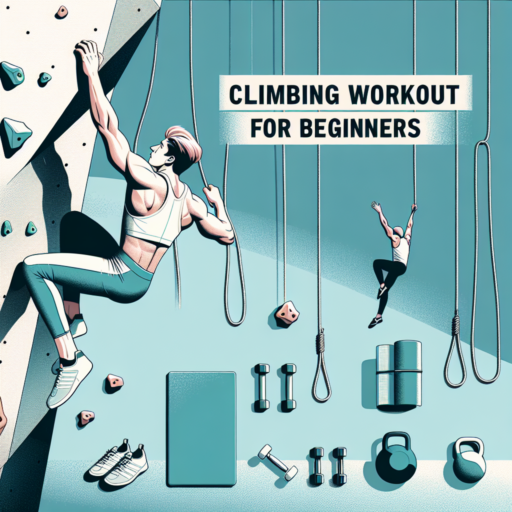How many days a week should I train for climbing?
Deciding on the ideal number of days for climbing training each week can vary significantly based on individual goals, current fitness levels, and climbing experience. However, a common recommendation for climbers looking to improve their skills and fitness is to aim for 3 to 4 days of training per week. This schedule allows for a balanced approach, providing ample training stimulus for progress, while also ensuring sufficient recovery time to prevent overtraining and injuries.
For beginners, starting with 2 to 3 days of climbing training per week is often advisable. This frequency allows newcomers to gradually adapt to the physical and technical demands of climbing without overwhelming them. As proficiency and conditioning improve, training frequency can be increased to further challenge the climber and promote continuous improvement.
More experienced climbers might find that training 4 to 5 days per week allows them to maintain and build upon their existing skill set and endurance. It’s crucial for climbers at this level to listen to their body and incorporate rest days, especially if they’re integrating more intense training sessions or focusing on areas of weakness that require significant effort to improve.
How to structure a training plan for climbing?
Creating a tailored training plan is essential for climbers who aim to improve their skills and reach new heights. To structure an effective climbing training program, start by identifying your end goals and assessing your current level. Whether focusing on bouldering, sport climbing, or trad climbing, the key is balance and specificity. Training should address physical strength, technique, mental preparation, and recovery.
Establish Clear Objectives
Begin with clear, achievable goals. Whether you’re aiming to climb a specific grade, tackle a challenging route, or simply increase your endurance, having a target in mind will guide your training decisions. Break your main goal into smaller, measurable milestones to maintain motivation and track progress.
Design a Balanced Routine
Balance is critical in a climbing training plan. Incorporate exercises that build core strength, improve flexibility, and enhance grip strength. Techniques like hangboarding, campus boarding, and systematic climbing drills foster precise skill development, while cross-training activities such as yoga or swimming can improve overall fitness and recovery times. It’s also imperative to include rest days to allow your body to recover and adapt.
Remember, a well-structured training plan for climbing adapts as you evolve. Regular assessment of your progress will help you fine-tune your approach, ensuring you continue to challenge yourself and achieve your climbing objectives.
How do you train your body for climbing?
Training your body for climbing is essential not only for improving performance but also for preventing injuries. It involves a mix of strength training, endurance workouts, and technique refinement that together contribute to making you a capable and efficient climber. The key aspects to focus on include grip strength, core stability, and lower body power.
Strengthening Your Grip
To begin training for climbing, focusing on your grip strength is crucial. Exercises such as dead hangs from a pull-up bar or a climbing hangboard can significantly enhance your ability to hold onto various climbing holds. Adding exercises like wrist curls and reverse wrist curls will further develop forearm strength, providing the necessary endurance for longer climbs.
Building Core and Lower Body Power
Core stability is paramount in climbing, as it aids in balance and body control. Implementing a routine that includes planks, sit-ups, and Russian twists can build a strong core. For lower body strength, lunges and squats are pivotal exercises. They work on leg muscles, providing the power needed to push up on steep routes. Additionally, practicing high-steps and rock-overs on small holds or a bouldering wall can simulate climbing movements, enhancing both strength and technique.
No se han encontrado productos.
How do you get in shape to climb?
Getting in shape to climb requires a targeted approach that focuses on both the physical and technical aspects of climbing. It involves a mix of strength training, endurance activities, and specific skills practice. Climbers need to develop powerful upper body strength, a strong core, and resilient lower body muscles to effectively navigate climbs.
Strength Training
Strength training is crucial for climbers aiming to improve their ability to tackle challenging routes. Exercises like pull-ups, push-ups, and planking help to build the upper body and core strength essential for climbing. Incorporating weightlifting that focuses on the legs can also enhance your power for those difficult moves and leaps. Climbers should aim for a balanced workout regimen that strengthens all the key muscle groups involved in climbing.
Endurance Building
Endurance is another vital component of getting in shape for climbing. Activities such as running, swimming, or cycling can significantly improve cardiovascular health, allowing climbers to sustain longer sessions on the rock. Including long-distance hikes or stair climbing in your training can also mimic the endurance needed for climbing, particularly for outdoor routes that require a significant hike to approach.
Practice on the Wall
No amount of physical training can substitute the benefits of actual climbing. Spending time on the climbing wall, whether indoors or outdoors, helps to hone technique, improves grip strength, and builds climbing-specific endurance. Engaging in various forms of climbing like bouldering, sport climbing, and traditional climbing can provide a well-rounded climbing skill set. It’s essential to focus on technique and body positioning to make the most of your strength and endurance gains.



